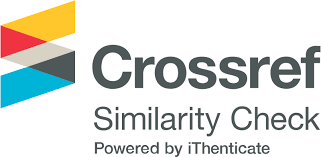Efficacy of Psychodrama Approach for Post-Traumatic Stress Disorder: An Empirical Review
DOI:
https://doi.org/10.59743/Keywords:
Psychodrama, Postromantic Stress Disorder, EfficacyAbstract
This study aims to explore the different therapeutic methods designed to address issues such as depression, anxiety, trauma, and low self-esteem. It specifically highlights psychodrama as a valuable therapeutic tool for helping individuals with PTSD process and cope with their experiences. The study provides an overview of the nature of traumatic experiences from a PTSD perspective, explains the theoretical underpinnings of psychodrama, and discusses how this approach can be applied to treat PTSD patients. In doing so, the research contributes a fresh perspective to the existing body of literature, suggesting psychodrama as an effective intervention for individuals affected by PTSD.
Downloads
References
Berliner, L. (2005). The results of randomized clinical trials move the field forward. Child Abuse & Neglect, 29 (2), 103-105.
Boney-McCoy, S., &Finkelhor, D. (1995). Psychological sequelae of violent victimization in a national youth sample. Journal of Consulting and Clinical Psychology, 70, 726-736.
Blatner, A. (1996). References on warming up, pp. 60-63. Acting-in: Practical applications of psychodramatic methods. New York: Springer.
Blatner, A. (1997). Psychodrama: The State of the Art. The Arts in Psychotherapy, 24 (1), 23-30.
Corder, B. F. (2000). Structured psychotherapy groups for sexually abused children and adolescents. Sarasota, FL: Professional Resource Press.
Cohen, J. A., Berliner, L., &Mannarino, A. P. (2000). Treatment of traumatized children: A review and synthesis. Journal of Trauma, Violence and Abuse, 1 (1), 29-46.
Carr, A. (2000). Family therapy: Concepts, process and practice. Chichester: John Wiley and Sons.
Corder, B. F., Haizlip, T., &DeBoer, P. (1990). A pilot study for a structured, time-limited therapy group for sexually abused pre-adolescent children. Child Abuse & Neglect, 14, 243-251.
Dayton, T. (2005). The use of psychodrama in dealing with grief and addiction-related loss and trauma. Journal of Group Psychotherapy, Psychodrama, and Sociometry, 58 (1), 15-34.
Dilillo, D. (2001). Interpersonal functioning among women reporting history of childhood sexual abuse: Empirical findings and methodology, Clinical Psychology Review, 553-576.
Dufour, S., &Chamberland, C. (2004). The effectiveness of selected interventions for previous maltreatment: Enhancing the well-being of children who live at home. Child & Family Social Work, 9 (1), 39-56.
Family Violence Prevention Fund. (2008). Domestic violence is a serious, widespread social problem in America: The facts. Retrieved from http://www.endabuse.org/resources/facts/.
Fong, J. (2007). Psychodrama as a preventative measure: Teenage girls confronting violence. Journal of Group Psychotherapy, Psychodrama, and Sociometry, 59 (3), 99-108.
Ghazi Daif Allah Ghazi Al-Otaibi (2001). Post-Traumatic Stress Disorder and its Effect on Motivation for Achievement and Future Orientation in a Sample of Kuwaiti Youth, Unpublished Ph.D. Dissertation, Zagazig University.
Gold, E. (1986) Long-term effects of sexual victimization in childhood: An attributional approach. Journal of Consulting and Ciinical Psychology 54: No. 4, 471-475.
Gerrity, D. A., & Peterson, T. L. (2004). Groups for survivors of childhood sexual abuse. In Handbook of Group Counseling and Psychotherapy (pp. 497-517). Thousand Oaks, CA: Sage.
Jehu, D., Gazan, M., & Klassen. C. (1985) Common therapeutic targets among women who were sexually abused in childhood. Journal of Social Work and Human Sexuality 3: 25-45.
Jonzon E, &Lindblad F. (2004). Disclosure, reactions and social support: findings from a sample of adult victims of child sexual abuse. Child Maltreat. 9(2):190-200.
Kolko, D. J. (1987). Treatment of child sexual abuse: Programs, progress, and prospects. Journal of Family Violence, 2, 303–318.
Kipper, D. A., & Jasdeep, H.. (2005).The Spontaneity Assessment Inventory: The relationship between spontaneity and nonspontaneity Journal of Group Psychotherapy, Psychodrama, &Sociometry 58, no. 3 (2005): 119-129.
Kipper, D. A., & Haim, S. (2006).The Revised Spontaneity Assessment Inventory (SAI-R): spontaneity, well-being, and stress. Journal of Group Psychotherapy, Psychodrama, &Sociometry 59(3),127-136.
Manal Al-Sheikh (2009). The Psychology of Wars, Disasters, and Accidents and the Role of Psychological Treatment: Post-Traumatic Stress Disorder, 1st Edition, Dar Al-Farabi, Beirut.
McVea, & Charmaine, S. (2009). Resolving painful emotional experience during psychodrama.
Mohammad Ahmad Al-Nabulsi (1995). Psychological Trauma: The Psychology of Wars and Disasters, Dar Al-Nahda Al-Arabia for Printing and Publishing, Beirut, Lebanon.
Moreno, J. L. (1971). Comments on Goethe and psychodrama. Group Psychotherapy and Psychodrama, 24, 14-16.
Ozarin, L. (2003)"J. L. Moreno, M.D.: Founder of Psychodrama." Psychiatric News. 16 May 2003; and Victor Yalom, "An Interview with Zerka Moreno, TEP: Psychodrama and Life with J. L. Moreno," at http://www.psychotherapy.net/interview/zerka_moreno
Osofsky J.D. (1995). The effects of exposure to violence on young children. Am Psychol. 50(9):782-8. DOI: 10.1037/0003-066X.50.9.782.
Powell, L., &Faherty, S. L. (1990). Treating sexually abused latency age girls. The Arts in Psychotherapy, 17, 3547.
Reeker, J., Ensing, D., & Elliott, R. (1997). A meta-analytic investigation of group treatment outcomes for sexually abused children. Child Abuse & Neglect, 21,
Sanderson, C. (2005). Abuso sexual emcrianças: fortalecendopais e professores para protegercrianças de abusossexuais. São Paulo: M. Books.
Silovsky, J. F., &Hembree-Kigin, T. L. (1994). Family and group treatment for sexually abused children: A review. Journal of Child Sexual Abuse, 3, 1–20.
Saywitz KJ, Mannarino AP, Berliner L, Cohen JA.(2000).Treatment for sexually abused children and adolescents. Am Psychol.; 55 (9): 1040-9. DOI: 10.1037/0003-066X.55.9.1040.
Tsai. M. & Wagner, N. (1978) Therapy groups for women sexually molested as children. Archives of Sexual Behavior 7: 417-427.
Underwood, L., Stewart, S., & Castellanos, A. (2007). Effective practices for sexually traumatized girls: Implications for counseling and education. International Journal of Behavioral Consultation and Therapy, 3 (3).
Wade, G. (2000). Hurting and healing: How to overcome the trauma of sexual abuse and rape. Shaftesbury: Element.
Downloads
Published
Issue
Section
Categories
License
Copyright (c) 2025 خالد مفتاح قزيط

This work is licensed under a Creative Commons Attribution 4.0 International License.




